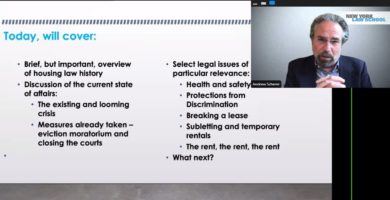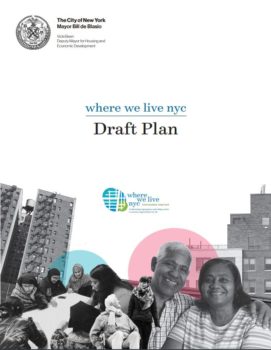 Even though the Supreme Court struck down race-based land use controls over a hundred years ago in Buchanan v. Warley, 245 U.S. 60 (1917) it has long been known that zoning continues to create or increase racial and economic segregation. Today communities across the U.S. are reexamining their zoning regulations to create more equal, equitable, inclusive, and resilient communities by removing requirements, limitations, or prohibitions that disproportionately and negatively impact individuals based on race … <Read More>
Even though the Supreme Court struck down race-based land use controls over a hundred years ago in Buchanan v. Warley, 245 U.S. 60 (1917) it has long been known that zoning continues to create or increase racial and economic segregation. Today communities across the U.S. are reexamining their zoning regulations to create more equal, equitable, inclusive, and resilient communities by removing requirements, limitations, or prohibitions that disproportionately and negatively impact individuals based on race … <Read More>
housing
Appellate Division Provides Major Win for Two Bridges Developers
Two Bridges development gets Appellate Division ruling but two lawsuits remain pending. On August 27, 2020, the First Department’s Appellate Division unanimously ruled in favor of a Lower East Side development that would consist of four towers, 11,000 square feet of retail, and over 2,700 residential units. Of the 2,700 residential units, approximately 700 units will be dedicated to affordable housing and 200 units will be set aside for senior housing. The project’s development group … <Read More>
Housing Law and Policy in the Time of COVID-19 CLE Recap
Watch CLE HERE, Password: 8O*9^24?
On June 1, 2020, the Center for New York City Law, the Center for Real Estate Studies and the Impact Center for Public Interest Law at New York Law School hosted a virtual CLE. The topic was “Housing Law and Policy in the Time of COVID-19.” The CLE was led by Professor Andrew Scherer. Anthony Crowell, Dean and President of New York Law School gave opening remarks.
Council Committees Consider Two COVID-19 Tenant Protection Bills
Testimonies at the public hearing revealed concerns about the two bills and their impact on the City’s tenants and landlords. On April 28, 2020, the City Council Committee on Housing and Buildings, and Committee on Consumer Affairs and Business Licensing held a joint public hearing on two bills that will provide protection to residential and commercial tenants who are financially impacted by COVID-19. Introduction 1912, sponsored by Council Speaker Corey Johnson, will prohibit court … <Read More>
Mayor’s Office Releases Blueprint for Future of Fair Housing
New Fair Housing Litigation Unit will use “secret shoppers” to test the housing market for discrimination and hold bad actors accountable. On January 7, 2020, the Office of the Mayor released the Where We Live NYC Draft Plan for public review. Where We Live NYC is a comprehensive plan to advance opportunity for New Yorkers by promoting fair housing and undo intentional policies and practices of segregation and inequity. The Draft Plan analyzes the state … <Read More>
City Planning Releases Second Regional Economic Growth Report
The 2019 report shows that the economy expanded faster than housing. On October 30, 2019, Deputy Mayor Vicki Been and Department of City Planning Director Marisa Lago announced the release of the 2019 Geography of Jobs report. This is the City’s second report on shifting growth patterns concentrating jobs and housing pressures in New York City and other urban areas.





